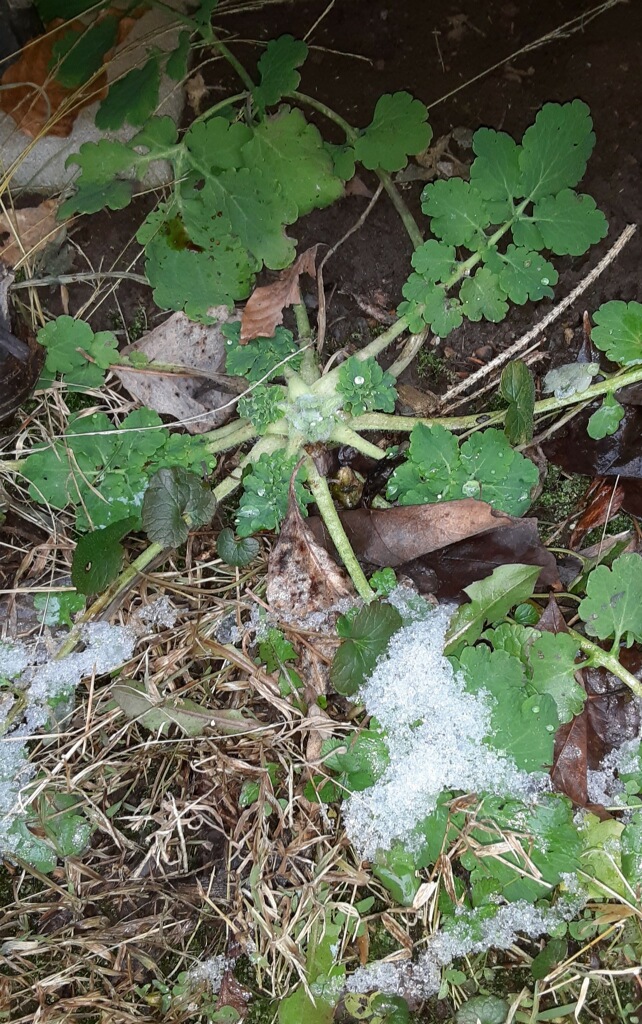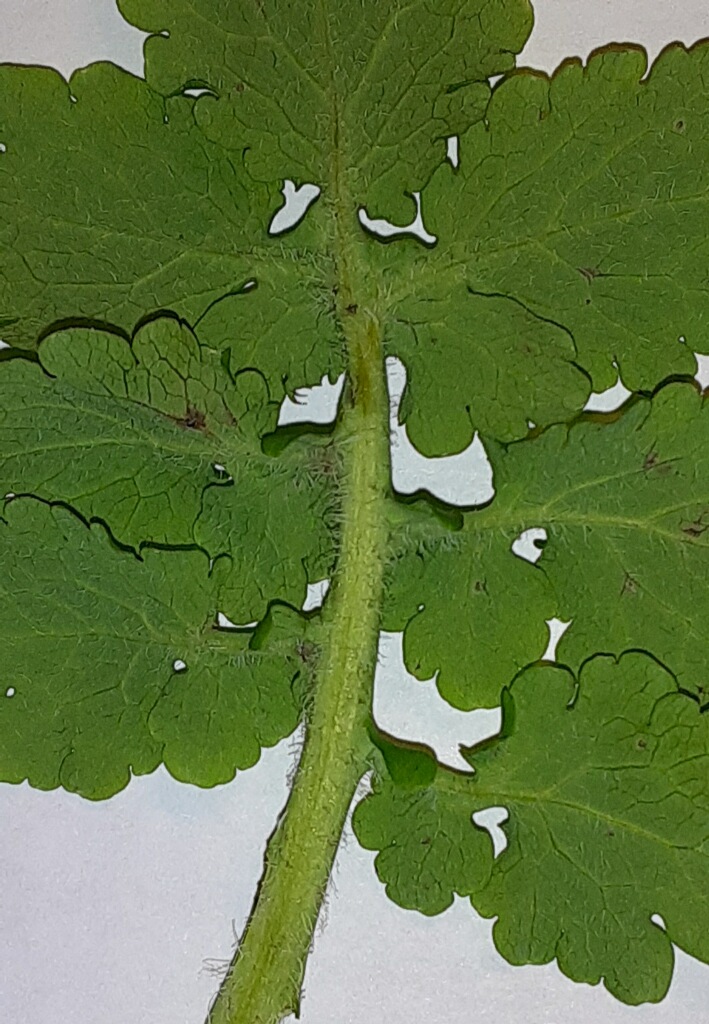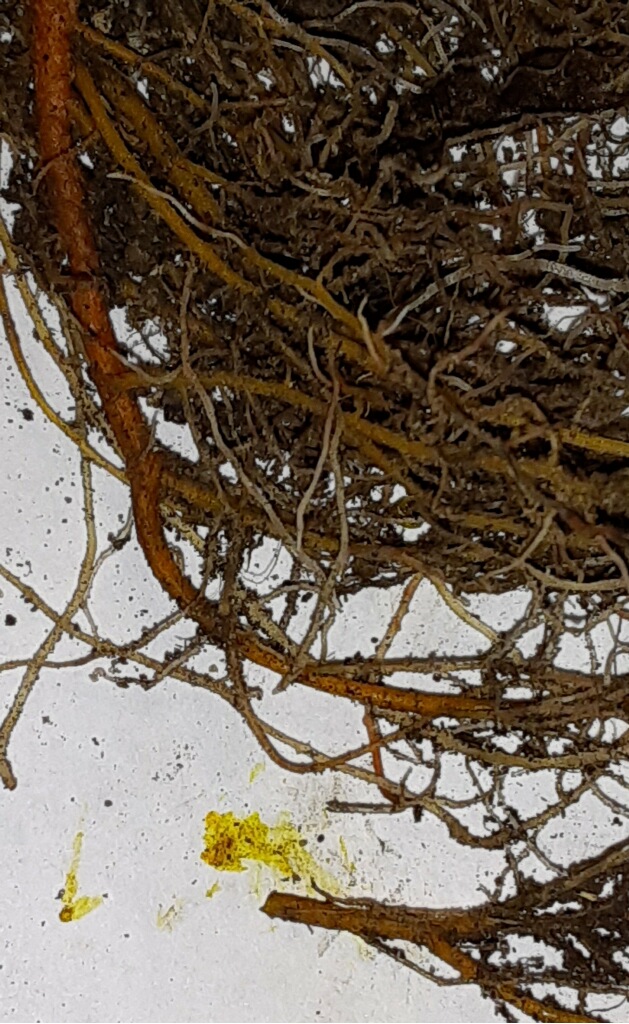By Sue Sprout

Greater Celandine or Swallowwort is a biennial plant of the Poppy Family, Papaveraceae. It is not looking so great right now. Winter is upon us. However, I must say, when I took its photo, Celandine’s rosette of basal leaves had a measurement of twenty inches across, and that’s just from its first year of growth. It is green which means it may still be photosynthesizing during warm spells of full sun when moist air surrounds it. Not bad, indeed. And when you look closely at the light green center of the plant from which the somewhat hairy lobed leaves are growing, you can see where its “greatness” will spring from…in spring. At that time, the plant will put up a flower stem one to two feet tall with lovely four-petaled yellow flowers. This growth spurt would occur about the same time as the swallows began returning on migration to Celandine’s native lands of Eurasia and North Africa. That is why it has the scientific name Chelidonium majus – because the Greek word for swallow is “chelidon”. It flourished in spring when the swallows returned and withered when they departed.

Celandine’s range in North America is from N.E. Canada to N. Georgia and west to Missouri. It was probably introduced to this continent by early English settlers in New England, thanks to the Romans who brought it to Britain with them when they invaded. All that transporting from place to place was due primarily to its medicinal qualities. Considering Celandine is in the same family as Opium Poppies, there are many unwanted side effects and reactions. Celandine’s plant juice is a toxic bright yellow-orange latex which contains alkaloids that can cause irritating rashes or allergic reactions in some people when they get it on their skin. This is funny because in earlier times, it was used for removing warts and freckles, eczema and ringworm. Since the juice resembled bile, a fluid made by the liver and stored in the gallbladder, doctors in the Middle Ages used it to treat liver disorders like jaundice and gallstones. Today we know using Celandine plant parts may actually cause liver problems. AND, it is poisonous to chickens!

The seeds of Celandine have fleshy structures attached to them that are rich in fatty acids and proteins, called “elaiosomes”. When the dry seed capsules break apart and drop them to the ground, the seeds act like ant baits. The ants quickly transport the seeds to their nests so that their larvae can eat up all of the lipids and proteins. Yum! The seeds, not so much. They go to a waste disposal area where they are discarded among the dead bodies and frass (ant poop). And there, they germinate – away from the parent plant with no competition for nutrients, water, light. This is an example of mutualism, a win-win situation where both the ants and the plants benefit. As many as 35% of herbaceous plants in Eastern North American forests make seeds with the fatty acid and protein structure on them. Many of the spring plants I have written about in the last two years have used this method of getting their seeds distributed. To name a few: bloodroot, Dutchmen’s Breeches, species of violets, wild ginger, and trout lily.

